You’ve got your gear loaded, everything is strapped down tight, family’s on-board — all you need to do now is hitch up your teardrop trailer and take off on your next adventure.
But, if you’re new to towing something behind your vehicle, you may need some help understanding more about trailer hitch height. This is an important part of having a safe, steady ride, and ultimately, a more enjoyable trip.
Why is Trailer Hitch Height Important
Proper hitch height is perhaps the most important thing you need to take care of before towing. Without proper hitch leveling, you may experience damage to your trailer or find it hard to control on the road.
If the hitch is too high, the back end of the trailer angles downward and can incur damage when going over bumps in the street or driving through rugged off-road terrain.
If the hitch is too low and the tongue of your trailer is pointed downward, you experience the same problem on the front end, in addition to making it more difficult to mount and dismount. When the tongue is too low, it’s hard to swing the trailer jack into place without the help of another person.
There are many advantages to keeping your trailer level while in tow. For instance, any gear on the inside of your teardrop camper is much more likely to stay in place. With a level trailer, you can pretty much park anywhere without much adjustment and set-up camp. You’ll really appreciate this if you roll into your campsite late and want to hop in and go to bed.
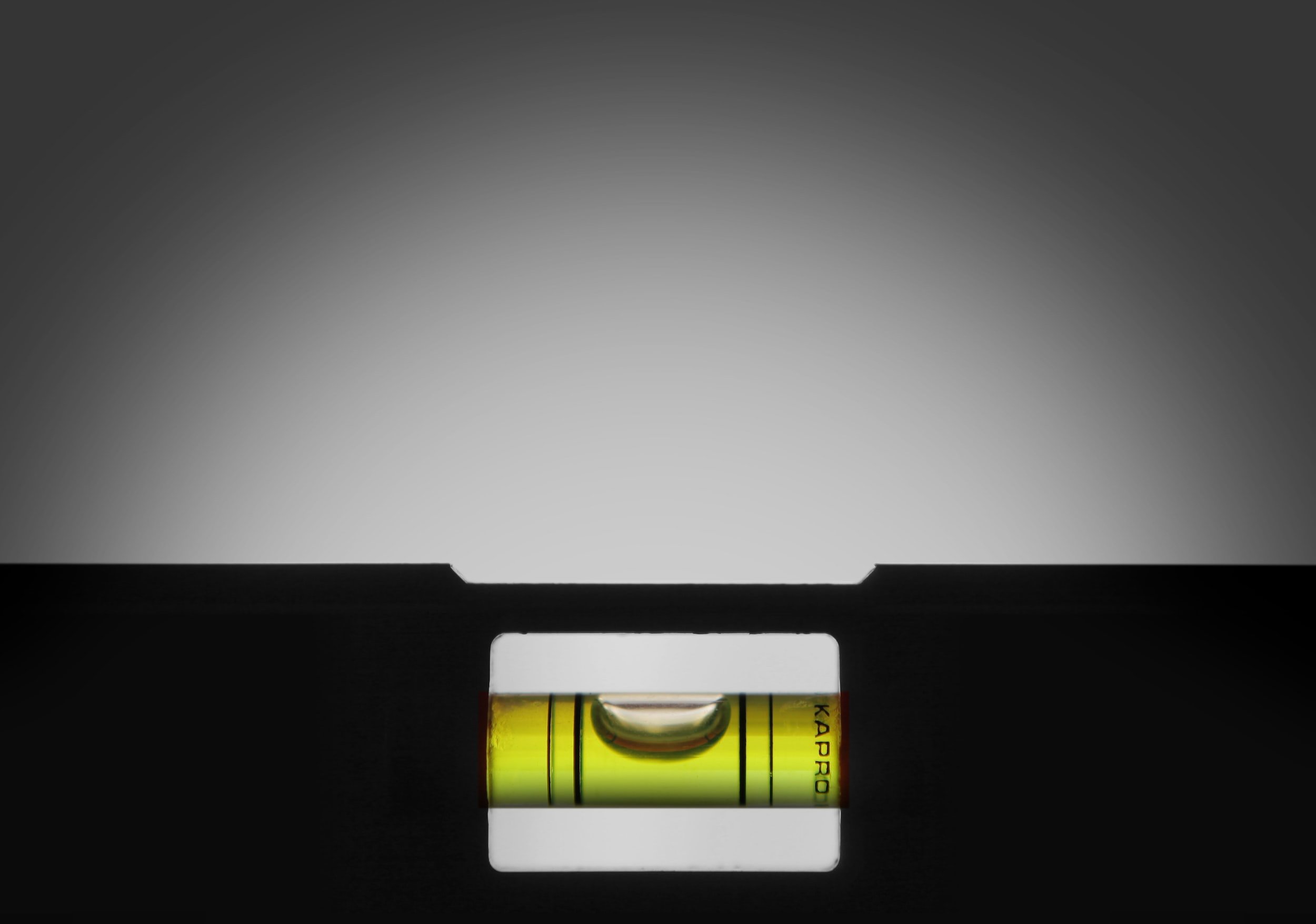
Parts of a Trailer Hitch
To learn more about trailer hitches, there are a few words you’ll want to have in your vocabulary. Let’s dive in!
Tow Vehicle
This is the car, truck, or other motor vehicle that you are using to pull the trailer.
Hitch
A hitch is the sturdy steel structure that bolts onto the frame of your tow vehicle. This provides the secure, stable connection to the vehicle needed for safe towing. This will be designed specifically for your vehicle make/model/year so if you’re purchasing yourself, be sure to confirm compatibility. You’ll also need to confirm that the hitch capacity rating is sufficient to tow your trailer weight.
Hitch Receiver
A hitch receiver is the square opening on the hitch that attaches to the back of the tow vehicle. It’s a square hole, usually placed under the back bumper, where you’ll attach the hitch.
Drawbar/Ball Mount and Trailer Ball
The drawbar/ball mount attaches to the hitch receiver tube, secured with a hitch pin, and can be fixed in a “rise” or “drop” orientation depending on the height requirements for what you are towing. This is also what the trailer ball is mounted, the metal ball that you attach your trailer coupler to.
Trailer Coupler
The coupler is the rounded mechanism located at the end of the trailer’s tongue which rests over the towing vehicle’s trailer ball. You then tighten the trailer coupler over the ball mount, so that the trailer is attached to the towing vehicle.
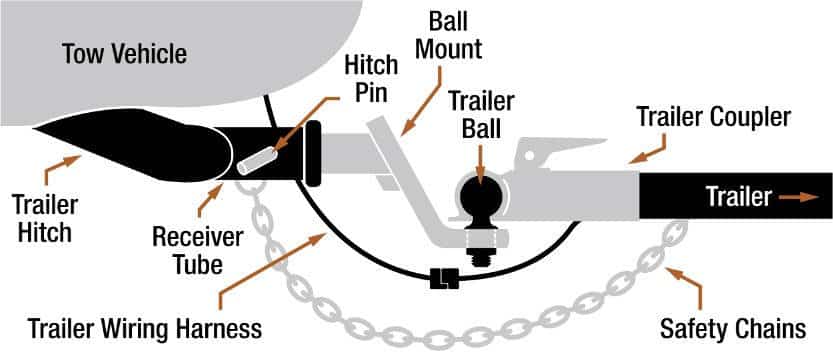
How Do You Measure the Correct Trailer Hitch Height?
When measuring, ensure that you’re parked on a level surface. Also, take into account any heavy items you may be hauling inside your trailer. Heavy equipment inside might skew your measurements by weighing down the trailer.
1. Measure Your Towing Vehicle’s Hitch Height
To obtain the right trailer hitch height, you’ll first need to measure the distance from the ground to the top of the inside of your hitch receiver attached to your tow vehicle.
In the U.S., trailer hitches are measured in standard inches — a tape measure and level are the perfect tools to get this job done.
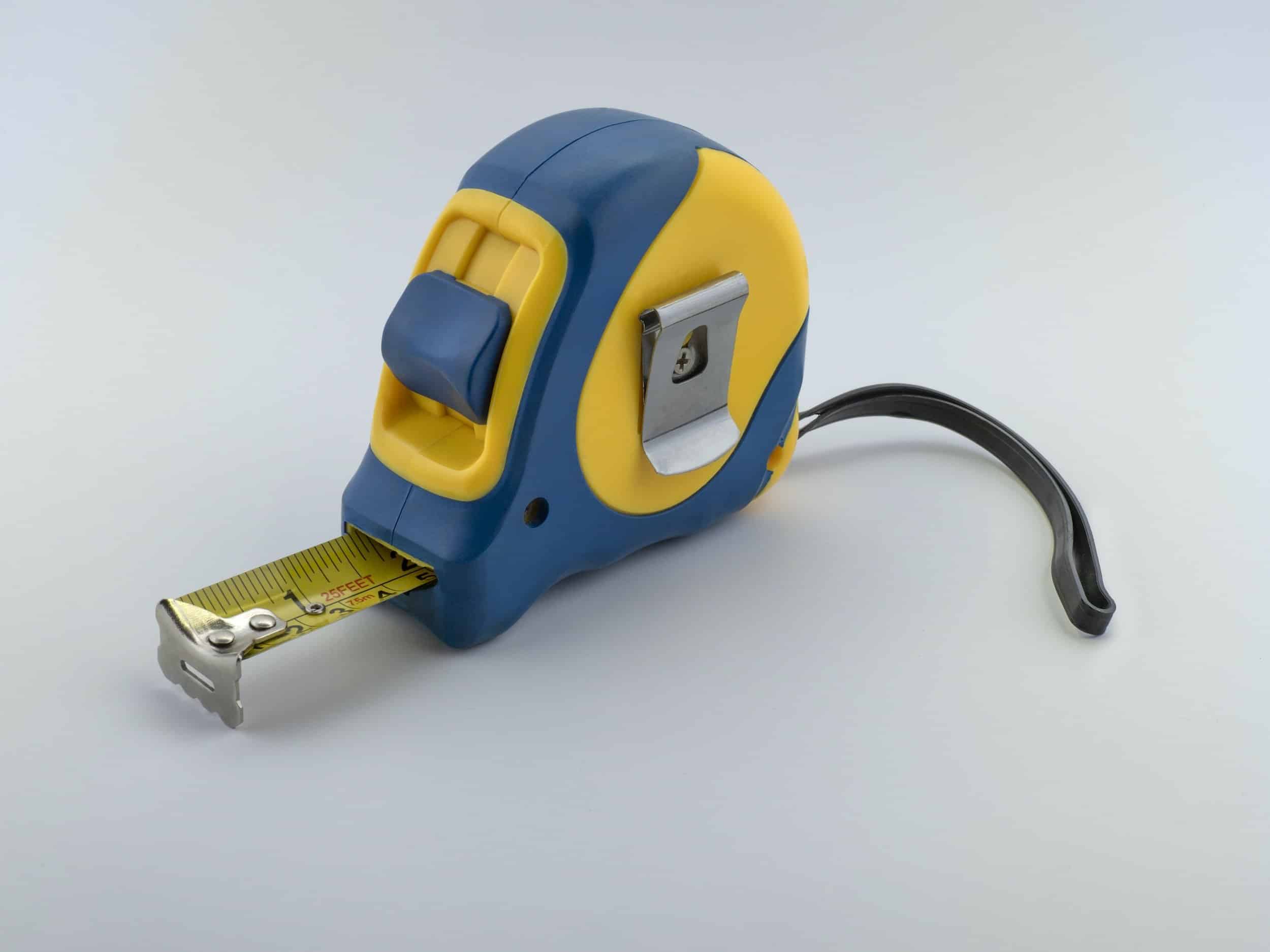
2. Measure Your Trailer’s Coupler Height
Now, on the trailer, you have the hitch coupler. Measure the distance from the ground to the bottom edge of your trailer’s coupler.
3. Find the Difference
Finally, subtract the two numbers you came up with. You’re left with the amount of rise or droppage you’ll need to account for. If your number is positive, you’ll need to drop the trailer. If your number is negative, you’ll need to raise the trailer.
Adjusting the Trailer Hitch Height
If you’re seeing some big differences, and aren’t sure what to do, here are some items you can use to remedy the situation.
Drop Hitches
A rise hitch is just the opposite. It’s where the hitch extends out, and then angles upward so that the ball is higher in the air. Any trailer that is noticeably larger than the vehicle towing it is likely using a rise hitch. For example, although they’re large, pontoon boats are very light, so they’re towable by smaller vehicles. In this instance, you’d want a rise hitch for the occasion, since the shorter vehicle needs to serve a taller frame.
The only thing to worry about with rise hitches is that you need to double check your vehicle’s towing capacity and hitch strength. Since these types of hitches allow you to tow larger objects on a smaller vehicle, you don’t want to overdo it and experience a decoupling incident.
Rise Hitches
A drop hitch is a receiver that extends out and then dips down a certain height. This lowers the ball mount that the coupler connects to, and subsequently lowers the angle of your trailer. Several types of smaller towables will likely use a drop hitch — for example, with a teardrop like those manufactured by Vistabule, you’ll use a drop hitch because the trailer frame sits lower to the ground compared to larger pull-behind motorhomes.
However, you may not need a drop hitch if you’re using a smaller vehicle, like a car or crossover. Since these also sit lower to the ground, compared to pickup trucks and SUVs, they may just require a simple straight hitch when towing something compact like a teardrop camper.
What Size Drop or Rise Hitch Do I Need?
Once you do your measurements and understand whether you need a drop or rise hitch, head to any local hardware store to choose from a wide selection of hitches. But where do you start?
Most hitches come measured in inches and fractions of inches, and are available in many standard sizes. Details listed directly on your car’s hitch or in your manual will inform you of the proper hitch size and weight capacity.
Regardless of what your vehicle requires, It’s generally recommended that your hitch ball does not reach more than 25 inches when measured from the center of the ball to the ground. Any higher and you’re pushing the overall stability of your vehicle.
Vistabule recommends the following sweet spot for its own trailers:
- You want to aim for 20” when measuring from the top of the trailer ball to the ground (with an empty vehicle). Then you will simulate a loaded vehicle (e.g., using two adults sitting towards the rear of your tow vehicle), aiming for somewhere in the 18″ range. Too low and you may find it difficult to properly seat your trailer coupler on to the trailer ball, especially on uneven terrain.
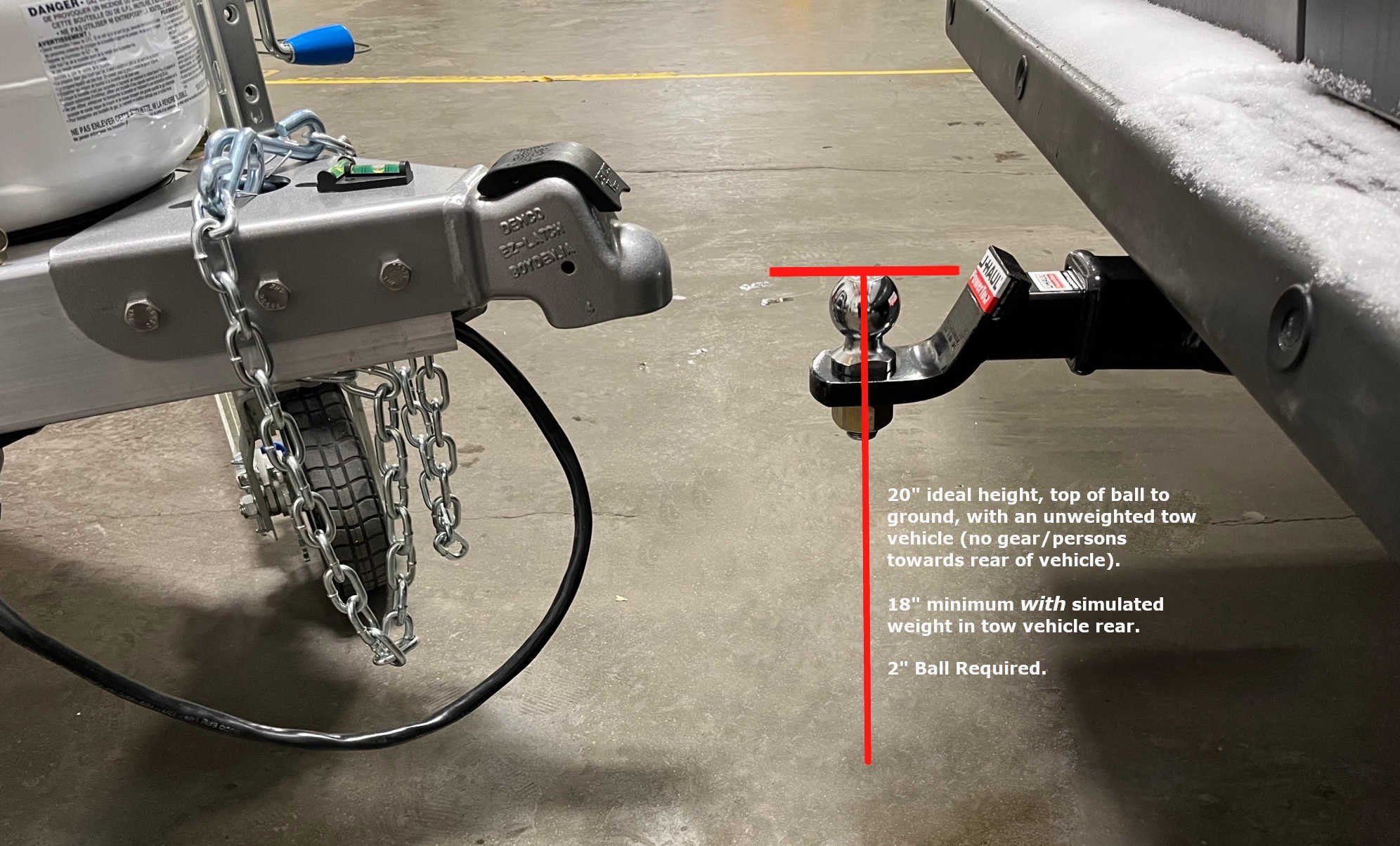
Ideal trailer ball height/hitch position
What Are Adjustable Hitches?
If you’re looking for a hitch that’s more versatile, or perhaps can be used between various vehicles, adjustable drop hitches have hit the trailer market in a big way. These devices come with the ability to change the height and ball mount size to make towing more convenient.
Towing a heavy snowmobile trailer with a Ford-150 today, but want to go camping with your teardrop trailer and Subaru Outback tomorrow? Simply adjust the drop or rise using the pin-and-hole mechanism to mix and match towing capabilities. Beware though, that they tend to cost more than a generic hitch, and are not fit for every type of vehicle.
Of course, standard rise/drop hitches are versatile in their own right. Simply by removing the mount ball, flipping it over, and reinstalling the ball, you give yourself both a rise and drop hitch. Flip over a 2 inch drop, for example, and you get a two-inch rise. Swapping in and out the ball can be done with a pipe or crescent wrench.
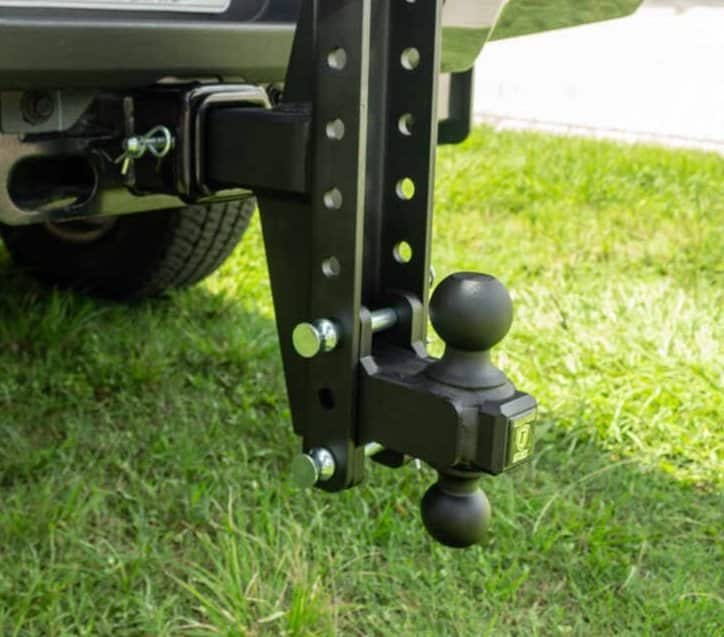
Adjustable hitch (photo from etrailer.com)
Average Teardrop Trailer Hitch Height
On average, you can expect a trailer hitch height of about 16-19 inches from the ground to the bottom of the coupler. The vast majority of hitch manufacturers sell their products with a ball mount that ends up in this range.
Teardrop trailers will normally be 17 inches or lower in height, with ball sizes that range from the smallest, 1-⅞ inch to the largest 2-5/16-inch balls. Vistabule’s couplers, for instance, are sized for a 2 inch trailer ball, along with a light towing weight of only 1,330 pounds. And, thanks to the extra care we took in engineering out any imbalance issues, even if your camper is slightly raised or lowered, you will not experience much sway, if any. Visit our specs page for more information about Vistabule trailer sizes.
Build Your Teardrop with Vistabule
Now that you know more about the proper height of your trailer hitch, you can take off on your next journey with confidence. Remember to take the proper measurements, level everything out, secure your gear down tightly, and most importantly, have fun!
If you’re searching for a new way to travel in style, look to Vistabule for a high quality teardrop camper. These compact, comfortable and versatile recreational vehicles are built to provide you with the ultimate camping experience, whether you’re going a mile down the road or exploring uncharted areas throughout the country.
For more information about building your personal haulable home, take a look at our Pricing Worksheet.
Related Posts
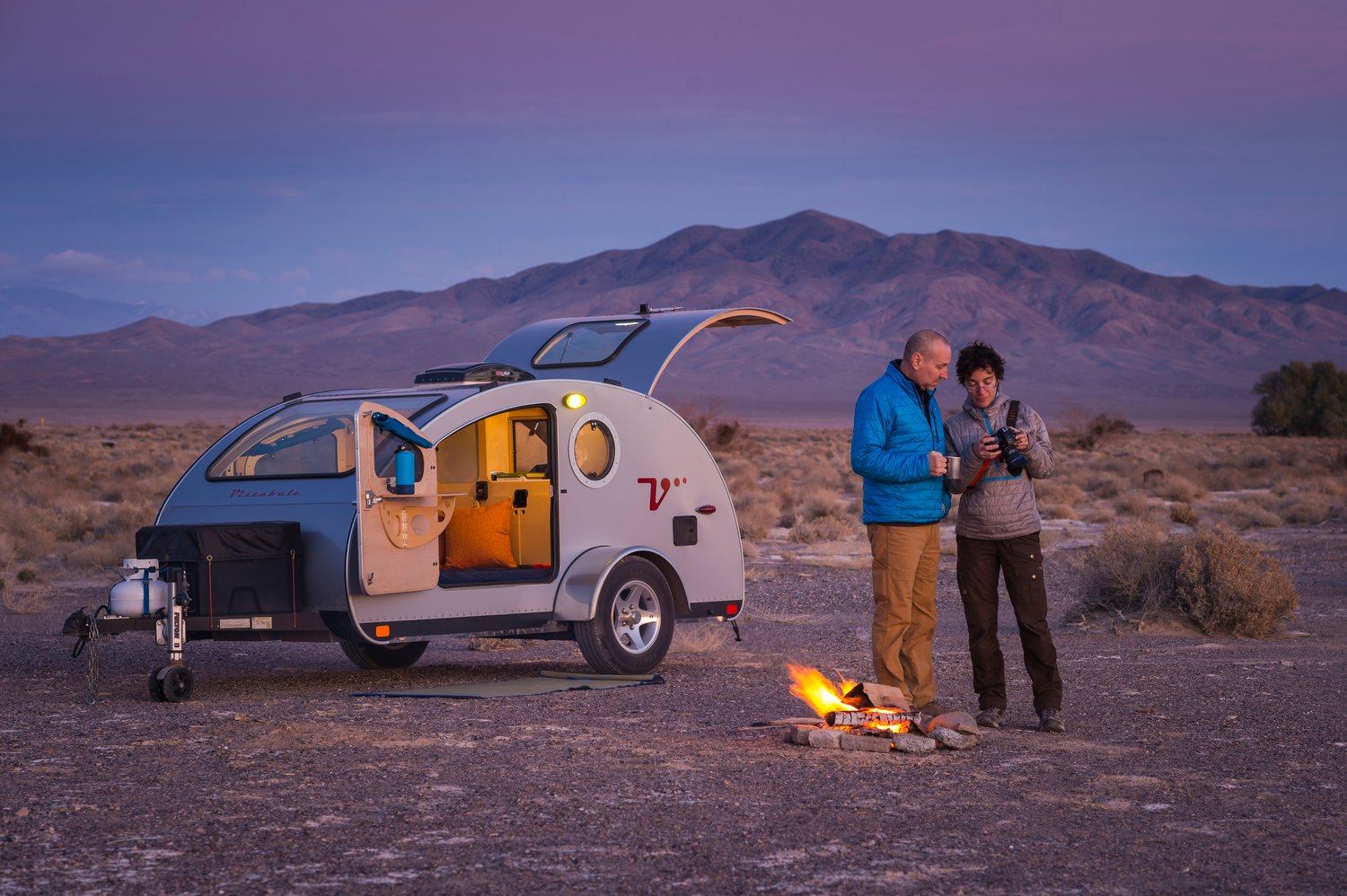
Meet Our Photographers
Kurt and Edwige Moses have been capturing beautiful images of our trailers for us for many years now, and are Vistabulers themselves. When seeing one of our trailers in person isn't an immediate option for a potential customer, we rely greatly on the Moses' talent and keen eye to help tell our story and showcase what makes the Vistabule and DayTripper so special. We'd love for you all to learn a little bit more about these two. So without further ado, Kurt and Edwige!

